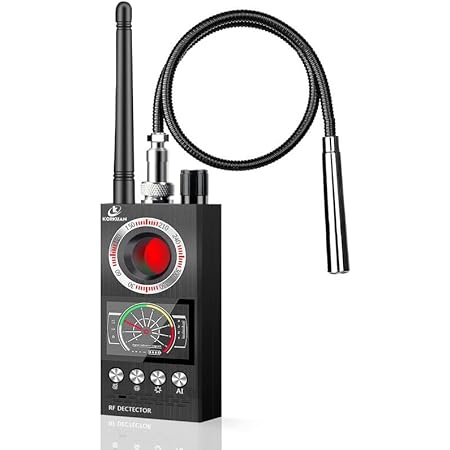Feeling paranoid about potential surveillance? It’s a valid concern in today’s technologically advanced world. Hidden cameras and listening devices can be incredibly small and difficult to spot, leading to anxieties about privacy violations. But fear not – anti-spy detectors are here to help. This comprehensive guide will explore the differences between hidden cameras and listening devices, and delve into how these sophisticated detectors effectively locate both, offering you peace of mind.
The Sneaky World of Hidden Surveillance
Before we dive into detection, let’s understand the enemy. Hidden cameras and listening devices come in various shapes and sizes, often disguised as everyday objects. Cameras can be embedded in smoke detectors, clocks, power adapters, even pens. Listening devices might be disguised as buttons, USB chargers, or innocuous-looking wall fixtures. The sheer variety makes them incredibly challenging to detect with the naked eye.
The key difference lies in their function: cameras capture visual information, while listening devices record audio. Some sophisticated devices even combine both functionalities, offering a complete surveillance package. This makes a comprehensive anti-spy detector, capable of identifying both visual and auditory surveillance, crucial for effective protection.
How Anti-Spy Detectors Work: The Science of Detection

Anti-spy detectors employ various technologies to identify hidden cameras and listening devices. Let’s examine some of the most common:
1. Lens Detection: Spotting the Hidden Eye
Many detectors utilize lens detection technology. This involves scanning for the infrared (IR) light emitted by most camera lenses. Cameras often use IR light for night vision or low-light conditions, and this signal can be detected by a specialized sensor within the detector. The detector will usually emit a visual or audible alert upon detecting the specific IR signature of a camera lens.
2. RF Detection: Tuning into Wireless Signals

Many hidden cameras and listening devices operate wirelessly, transmitting data via radio frequencies (RF). Anti-spy detectors equipped with RF detection capabilities scan for these signals within a certain frequency range. A strong RF signal in an unexpected location might indicate the presence of a hidden device. This technology can often pinpoint the approximate location of the device by identifying the strength of the signal.
3. Magnetic Field Detection: Locating the Power Source

Most electronic devices, including hidden cameras and listening devices, require a power source. These devices often generate a subtle magnetic field. Anti-spy detectors can detect these minute magnetic anomalies, providing another layer of detection capability. While not as precise as lens or RF detection, magnetic field detection can still indicate the general area where a device might be located.
Choosing the Right Anti-Spy Detector: A Buyer’s Guide
The market offers a wide array of anti-spy detectors, each with its own strengths and weaknesses. Here’s what to consider:
1. Detection Capabilities: A Multi-faceted Approach
Opt for a detector that incorporates multiple detection methods (lens, RF, and magnetic field). A multi-faceted approach drastically increases the chances of detecting various types of hidden surveillance.
2. Range and Sensitivity: A Wider Net

Consider the range and sensitivity of the detector. A longer range means you can scan a larger area more efficiently, while higher sensitivity is vital for detecting smaller, less powerful devices.
3. Ease of Use: Intuitive Operation
Choose a detector that is user-friendly. Look for clear instructions, intuitive controls, and easy-to-understand visual or audible alerts.
4. Portability: Flexibility and Convenience
Portability is another important factor. A smaller, lightweight detector is convenient for scanning various locations, while a larger, more powerful device might be better suited for comprehensive scans of larger spaces.
Addressing Specific Concerns: Cameras vs. Listening Devices
While both cameras and listening devices require careful detection, their respective characteristics require slightly different approaches:
Cameras: Finding the Hidden Eyes
Focus on detectors with strong lens detection capabilities. Pay special attention to areas where cameras are often hidden – power outlets, smoke detectors, and decorative items.
Listening Devices: Eavesdropping Prevention
Utilize detectors with both RF and magnetic field detection. Wireless listening devices often have a stronger RF signal, while wired ones might have a detectable magnetic field.
Beyond Detection: Practical Advice for Privacy Protection
Using an anti-spy detector is only one part of a comprehensive privacy strategy. Consider these additional tips:
- Regularly inspect your surroundings for suspicious objects.
- Be aware of your surroundings when in public spaces.
- Use strong passwords and secure your personal data.
- Be mindful of what you discuss in sensitive locations.
In conclusion, while the technology of hidden surveillance is constantly evolving, anti-spy detectors provide an effective line of defense against unwanted intrusions into your privacy. By understanding the different types of surveillance devices and choosing the right detector, you can take proactive steps to protect your personal space and sensitive information.